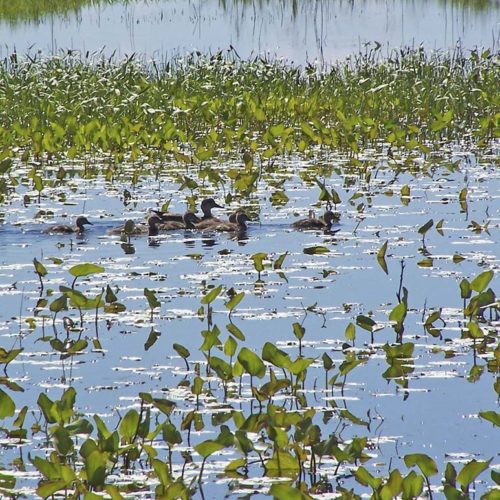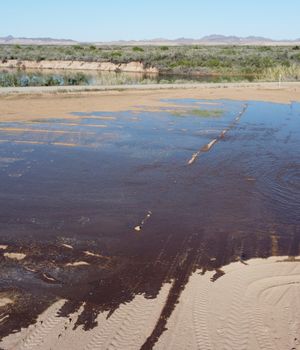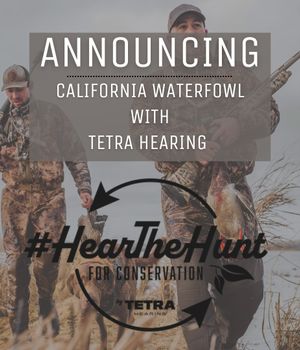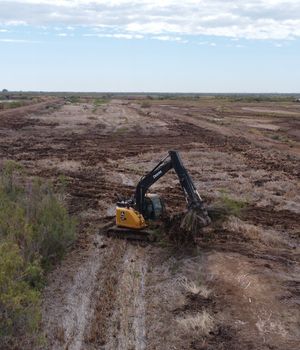California has lost about 95% of its historic wetlands, a victim of the post-Gold Rush push to drain “swamps” and put the land to “better” use.
We now know those wetlands were essential habitat to waterfowl, shorebirds and other wetland-dependent species. And they provided important environmental benefit as well: They filter and cleaning surface water before it returned to aquifers or the Pacific Ocean, and they help sequester carbon.
California’s human population is so large, and its massive agricultural output so essential, that we can’t expect to restore our wetlands to their former eminence. But California Waterfowl’s three-pronged approach accomplishes the next best thing.

This brood pond was designed for ducklings, providing food and cover from predators.

Watergrass is a key waterfowl food plant.
RESTORE, ENHANCE, ADVOCATE
California Waterfowl is eager to work with landowners who wish to convert agricultural land back to wetlands. One example is Bird Haven Ranch, a former rice farm converted to an extensive wetland in the Upper Butte Basin that now supports tens of thousands of wintering waterfowl. We helped the owner acquire conservation easements to ensure the land will never be developed, designed the wetland ecosystem and carried out the work.
But there aren’t a lot of restoration opportunities in California, so the bulk of our work focuses on making existing wetlands better. We:
- Maximize production of vegetation that provides food for literally millions of wintering waterfowl.
- Develop nesting and brood-rearing habitat to support our year-round resident waterfowl. Our regional biologists have seeded more than 10,000 acres with perennial grass seed to create ideal nesting habitat near wetlands that are specificially managed for brood-rearing.
- Do earth work and build water conveyance systems that maximize California’s limited water supplies.
We have regional biologists on hand to advise wetland managers.
To see public-land work we’ve done in recent years and what habitat conditions it has produced, click here – it’s an interactive map.
ADVOCACY
California Waterfowl’s public policy team advocates for laws and regulations beneficial to wetland restoration, enhancement and management. But that isn’t enough to secure the future of healthy wetlands in California.
That’s why CWA does everything it can to support waterfowl hunting and hunters in California. If you’re not familiar with hunting, it may sound counterintuitive that people who take from wetlands somehow help them. But the truth is hunters’ fees and taxes fund enormous amounts of habitat restoration and management, and many hunters voluntarily give even more to the cause. The result is that hunters give back more than they take.
In fact, about 60% of managed wetlands in this state are privately owned, and most of those are duck hunting clubs, maintained at substantial expense to their members. If duck hunting were to disappear, it’s highly unlikely anyone would continue paying to maintain those lands to high standards and ensure water is there when migrating birds need it.
THE LATEST NEWS ABOUT WETLAND RESTORATION

The final touches were put on Palo Verde Ecological Reserve
New gravel roads and a parking lot, along with seeding of the milo food plots, were done by DFW staff.

Special announcement: #HearTheHunt for conservation CWA + Tetra
Having conservation at the heart of our mission, we're thrilled to share news of our partnership with Tetra Hearing!

Construction has started with the removal of salt cedar and water control structures at the Imperial Wildlife Area Wister Unit 312 A-C
CWA’s efforts will help to improve habitat conditions for fall and into the future with better management capabilities, all funded by the Wildlife Conservation Board.


